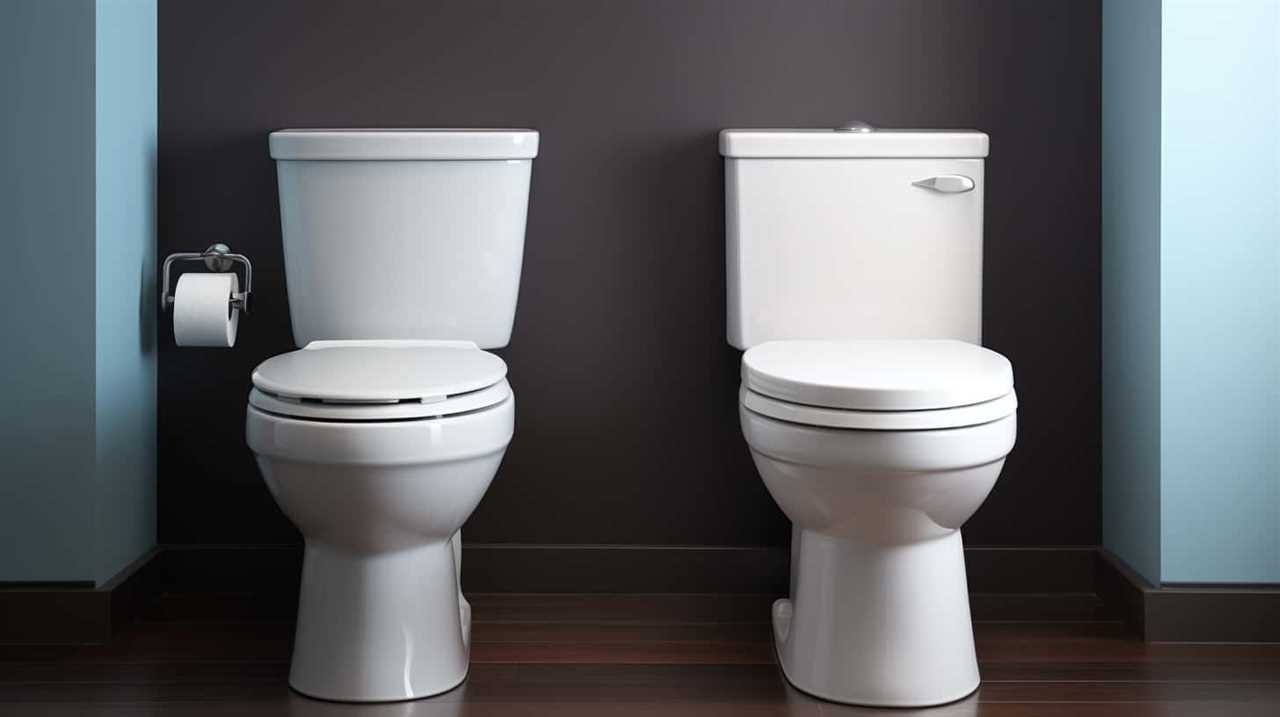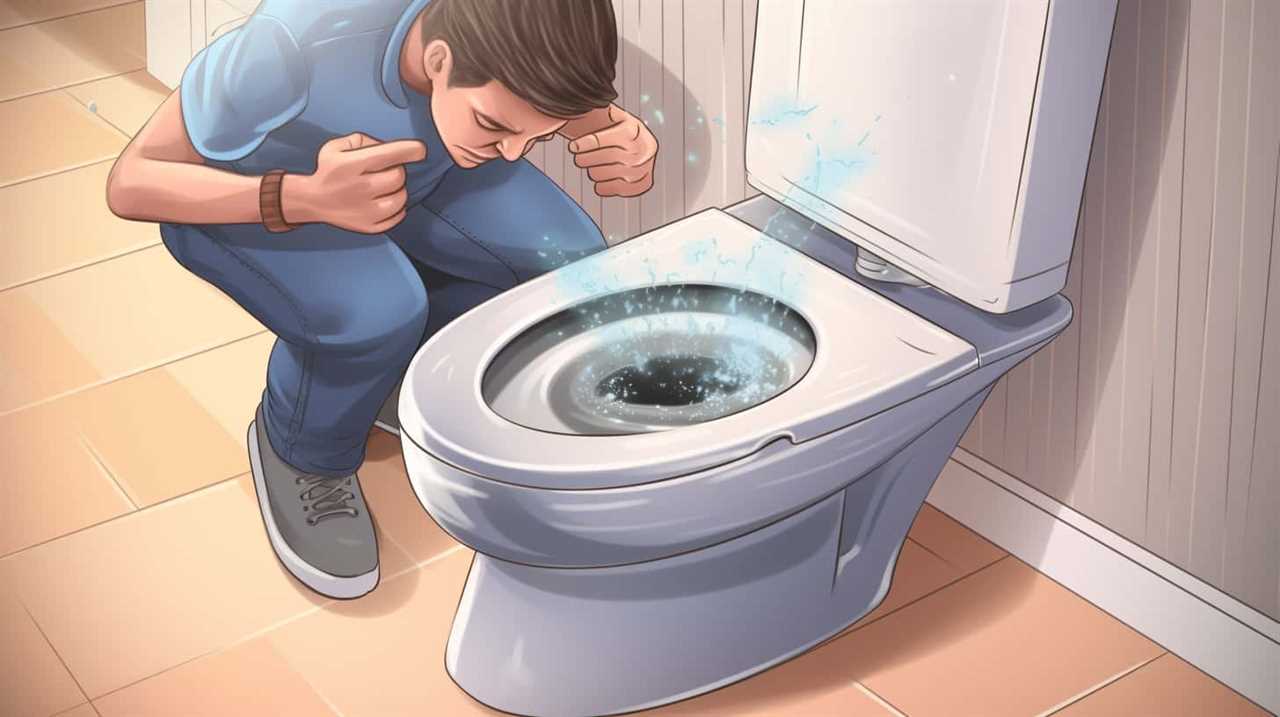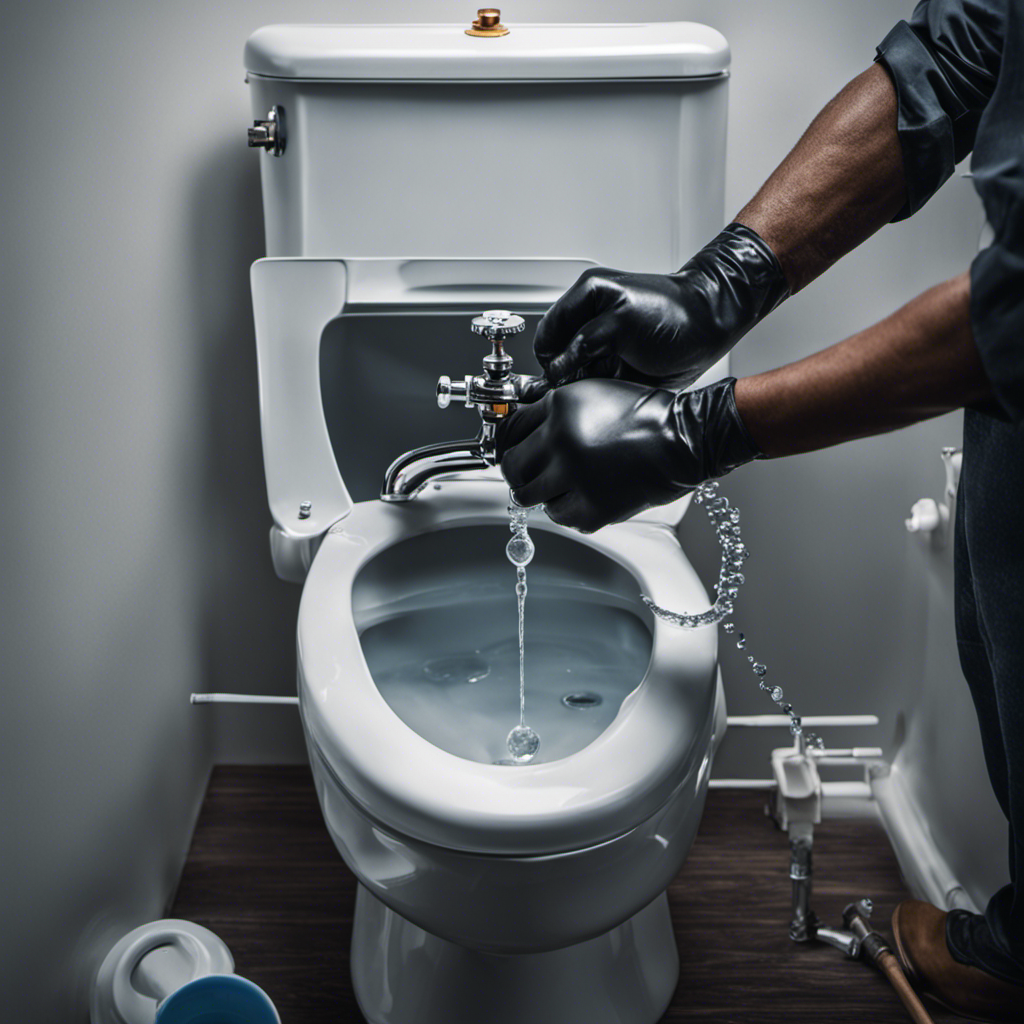Ever thought about the minimum pressure required to flush a toilet? We’ve got the information you need. This article will explore the significance of toilet flushing pressure and the variables that impact it.
We’ll also explain how to measure this pressure and provide tips to optimize it. So, if you’re seeking mastery in understanding toilet flushing pressure, you’ve come to the right place.
Let’s get started!
Key Takeaways
- Flushing pressure affects comfort, water conservation, and plumbing health.
- Low flushing pressure leads to incomplete flushing and multiple flushes.
- Inadequate pressure causes clogs and costly repairs.
- Optimal flushing pressure ensures efficient waste removal.
Why Toilet Flushing Pressure Matters
We frequently underestimate the importance of toilet flushing pressure in our daily lives.
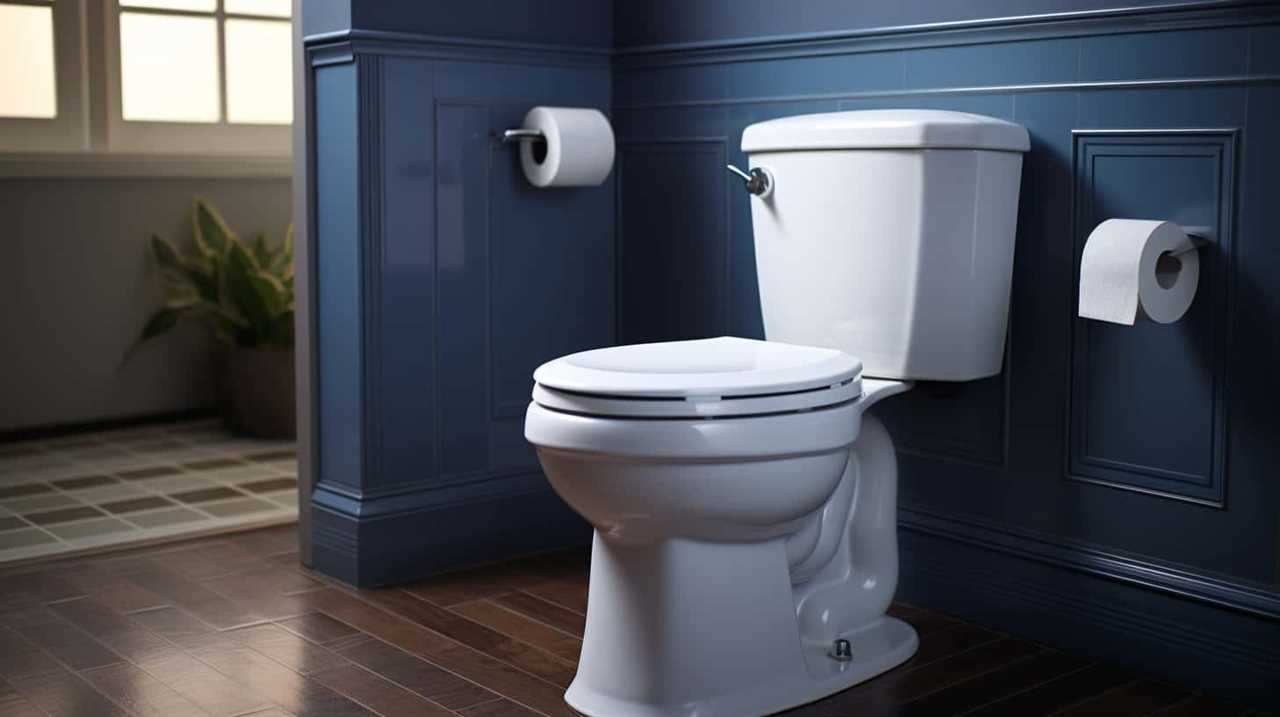
The flushing pressure of a toilet affects not only our comfort but also plays a vital role in water conservation and the overall health of our plumbing system.
When the flushing pressure is low, it can lead to incomplete flushing, resulting in the need for multiple flushes. This not only wastes water but also increases our water bills.
Additionally, low flushing pressure can cause clogs and blockages to form in our plumbing pipes, leading to costly repairs and potential damage to the entire system.
Factors Affecting Toilet Flushing Pressure
Several factors influence the flushing pressure of a toilet. Understanding these factors can help ensure optimal performance of the toilet flushing mechanism. Here are some key factors to consider:
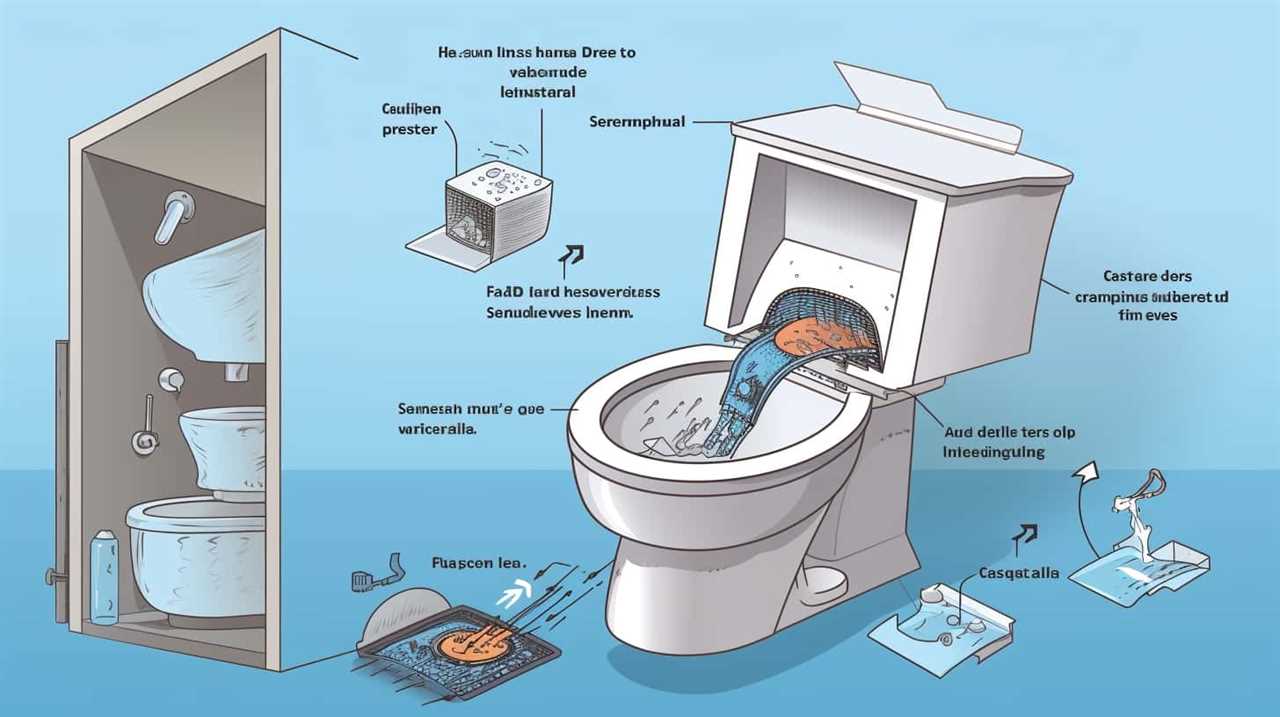
- Water pressure: The water pressure impact plays a vital role in the flushing process. Higher water pressure can create a stronger flush, while lower water pressure may result in a weaker flush.
- Toilet design: The design of the toilet, including the shape and size of the bowl and the trapway, can affect the flushing pressure. A well-designed toilet will have features that promote efficient flushing.
- Flush valve size: The size of the flush valve determines how quickly water enters the bowl during a flush. A larger flush valve allows for a faster and more powerful flush.
- Clogged or obstructed drain: If the drain is clogged or obstructed, it can restrict the flow of water and reduce the flushing pressure. Regular maintenance and clearing of any blockages are essential.
- Water supply line: The size and condition of the water supply line can impact the flushing pressure. A larger diameter supply line can provide more water flow, resulting in a stronger flush.
Understanding the Minimum Pressure Requirement
To fully comprehend the flushing process, it’s crucial to understand the minimum pressure required to effectively flush a toilet. The minimum pressure requirement is important for two main reasons: water conservation and the impact on plumbing.
Water conservation is a pressing issue, and toilets account for a significant portion of household water usage. By understanding the minimum pressure requirement, individuals can ensure that they’re using the least amount of water necessary to flush waste.
Additionally, low flushing pressure can have negative effects on plumbing. Insufficient pressure may result in incomplete flushing, leading to clogs and blockages. This can cause costly plumbing repairs and inconvenience for homeowners.
Therefore, understanding the minimum pressure requirement is vital for both water conservation and the longevity of plumbing systems.
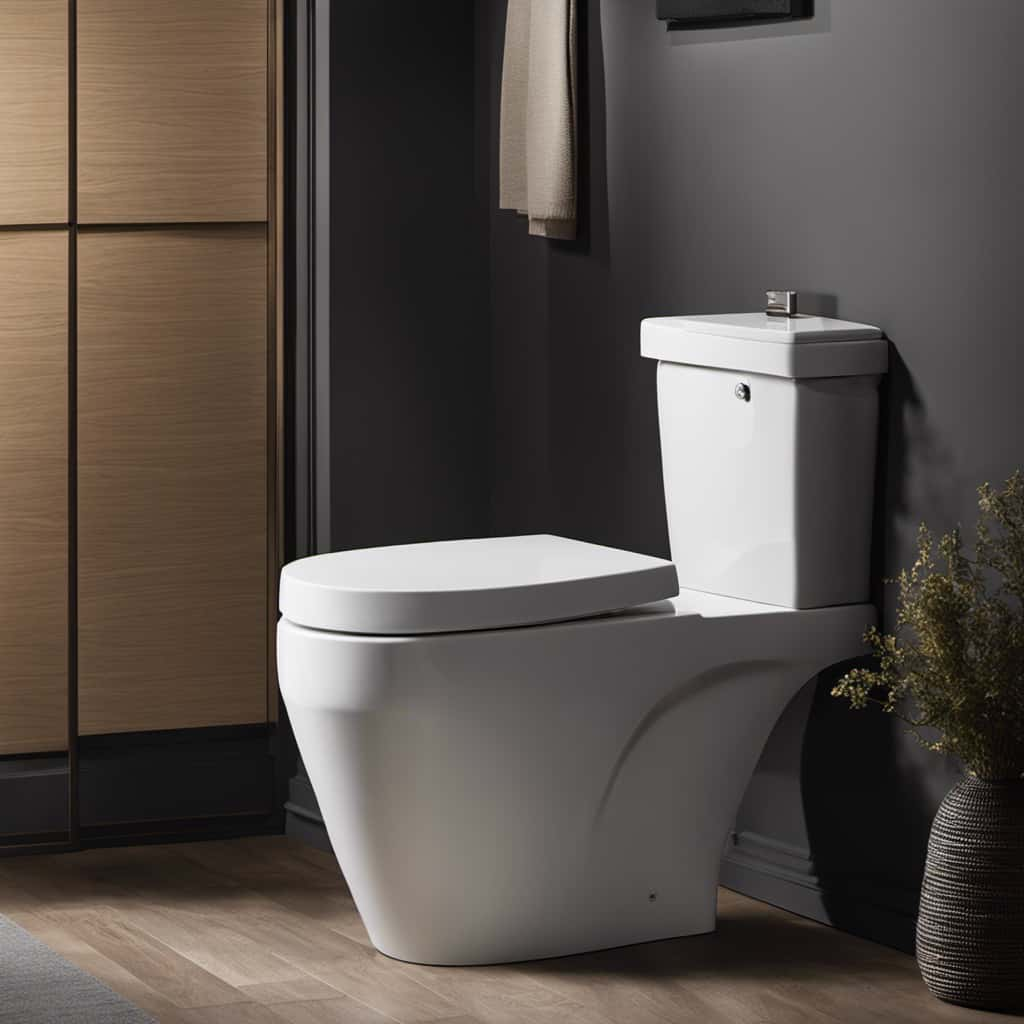
Now, let’s explore how to measure toilet flushing pressure.
How to Measure Toilet Flushing Pressure
To measure toilet flushing pressure, we can use a simple tool called a pressure gauge. This tool allows us to accurately measure the water pressure inside the toilet tank.
Here are five steps to measure toilet flushing pressure:
- Attach the pressure gauge to the water supply line of the toilet tank.
- Turn on the water supply and allow the tank to fill completely.
- Observe the pressure gauge reading, which indicates the water pressure inside the tank.
- Repeat the measurement multiple times to ensure accuracy.
- Take note of the average pressure reading for further analysis.
Understanding the toilet flushing pressure is essential for troubleshooting common flushing problems and maintaining optimal performance. Proper water pressure ensures efficient flushing, prevents clogs, and promotes the effective removal of waste.
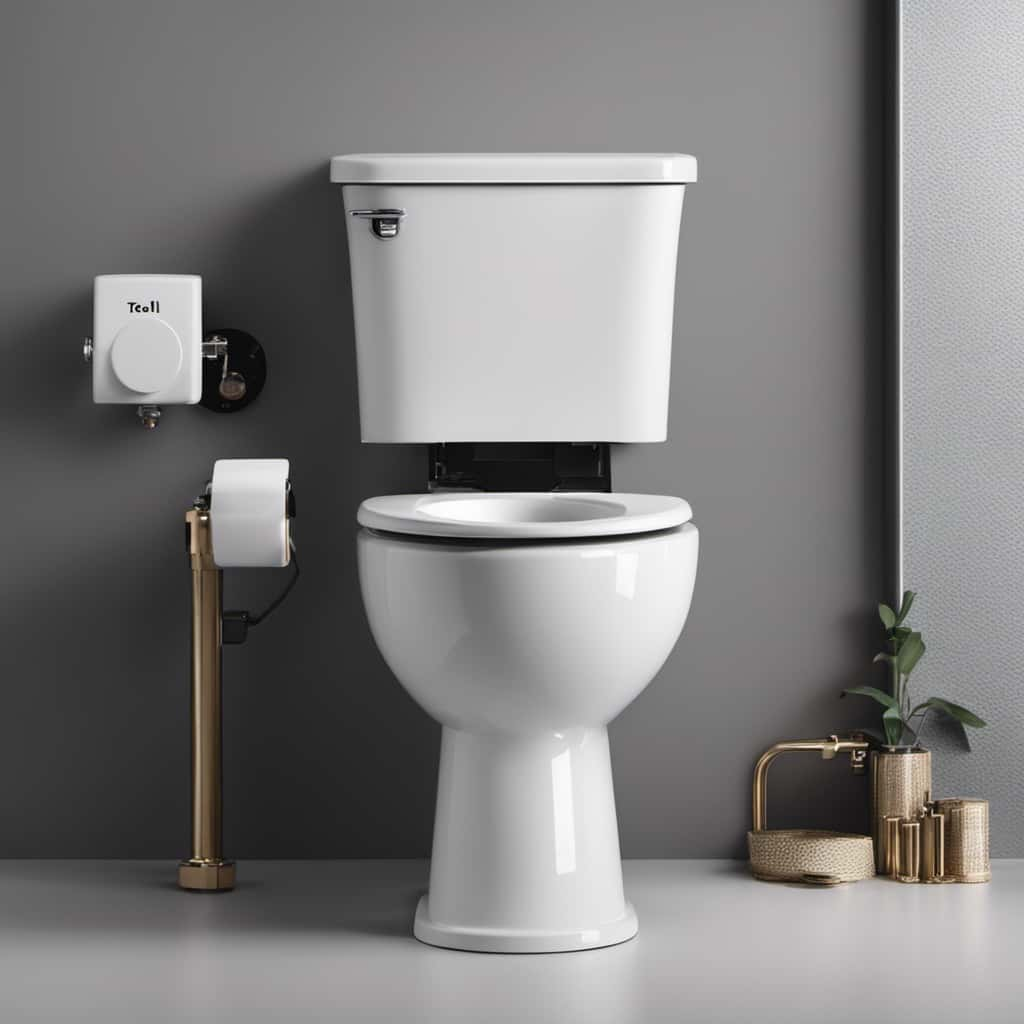
Tips for Optimizing Toilet Flushing Pressure
To optimize toilet flushing pressure, we can make a few adjustments to the toilet system. By addressing common toilet flushing problems and improving water efficiency, we can ensure a more effective flush while conserving water. Here are some tips for optimizing toilet flushing pressure:
| Tips for Optimizing Toilet Flushing Pressure |
|---|
| Check the water level in the tank |
| Adjust the flapper chain length |
| Clean the rim holes and jets |
| Install a pressure-assisted flushing system |
First, check the water level in the tank. It should be set at the manufacturer’s recommended level for optimal flushing. Next, adjust the flapper chain length to ensure a proper seal and prevent water leakage. Cleaning the rim holes and jets regularly can improve water flow and prevent clogs. Lastly, consider installing a pressure-assisted flushing system, which uses compressed air to enhance flushing power. These adjustments will not only improve toilet flushing pressure but also contribute to water efficiency in toilets.
Frequently Asked Questions
Can Low Toilet Flushing Pressure Be Fixed Without Professional Help?
Fixing low toilet flushing pressure can often be done without professional help. Troubleshooting toilet flushing problems involves checking the water supply, adjusting the fill valve, clearing clogs, and ensuring proper seal between the tank and bowl.
What Are the Long-Term Effects of Using Excessive Toilet Flushing Pressure?
Excessive toilet flushing pressure can cause long-term damage, such as cracked pipes, leaks, and increased water consumption. It is crucial to maintain appropriate pressure to prevent waste and promote water conservation.

Are There Any Health Risks Associated With Low Toilet Flushing Pressure?
Low toilet flushing pressure can lead to health hazards and plumbing maintenance issues. It is crucial to maintain an adequate pressure to ensure proper waste removal and prevent clogs.
Can Using a Plunger Improve Toilet Flushing Pressure?
Using a plunger can improve toilet flushing pressure by improving suction. It is one of the alternative methods to increase the force of the flush.
Is There a Way to Increase Toilet Flushing Pressure Without Using Excessive Water?
Improving water efficiency and exploring alternative flushing methods can enhance toilet flushing pressure without excessive water usage. By employing innovative techniques, we can optimize the flushing process while conserving resources.
Conclusion
In conclusion, understanding the minimum pressure required to flush a toilet is crucial for optimal functionality. Factors such as water volume, pipe diameter, and gravity all play a role in determining the necessary pressure.
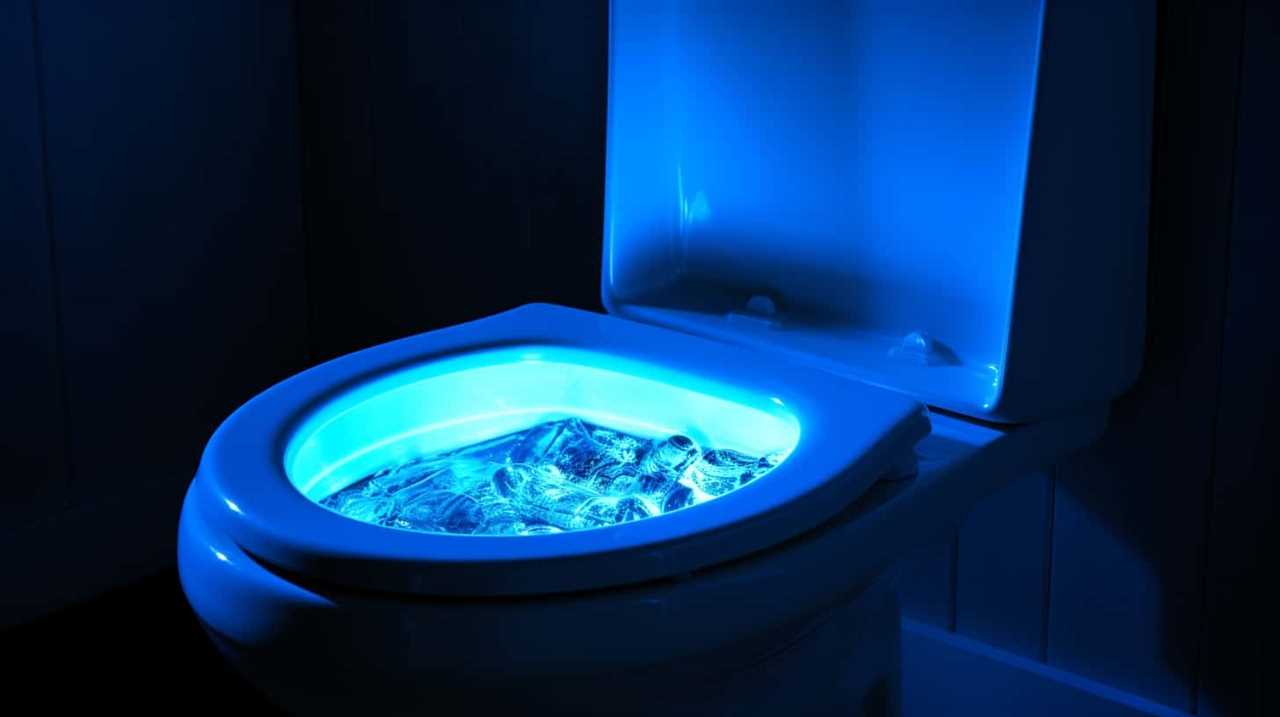
By measuring and optimizing toilet flushing pressure, you can ensure efficient and effective waste removal. So, why settle for a weak flush when you can achieve a powerful and satisfying result?
